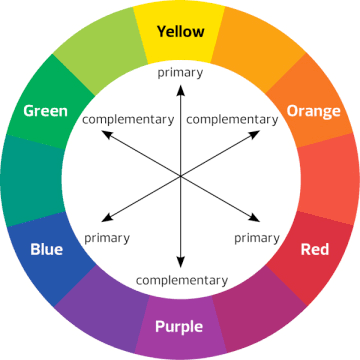The Power of Color Theory in Makeup: Choosing the Right Shades for Your Clients
As a makeup artist, understanding color theory is essential for creating stunning makeup looks. Color theory is the study of how colors interact and how they can be combined to create visually appealing compositions - this is taught in both my Fundamentals Makeup Course as well as in my Advanced Makeup Course. By understanding color theory, you can choose the right shades for your clients and create makeup looks that enhance their natural features.
Here are some tips for using color theory in makeup:
Identify your client's skin undertone
Skin undertone is the underlying color of the skin that affects how makeup appears on the face. Skin undertones can be cool, warm, or neutral. Cool undertones have a pink or blue tint, warm undertones have a yellow or golden tint, and neutral undertones have a mix of cool and warm tones. To identify your client's skin undertone, look at the veins on their wrist. If they appear blue, the client has cool undertones. If they appear green, the client has warm undertones. If they appear blue-green, the client has neutral undertones.
Use complementary colors
Complementary colors are opposite each other on the color wheel and create a vibrant contrast when combined. For example, green and red are complementary colors, as are purple and yellow. To create a striking makeup look, consider using complementary colors on your client's eyes, lips, or cheeks. However, be mindful not to use too much of these colors, as they can be overwhelming.
Harmonize with analogous colors
Analogous colors are colors that are next to each other on the color wheel and create a cohesive, harmonious effect when combined. For example, orange, red, and pink are analogous colors. To create a harmonious makeup look, consider using analogous colors on your client's eyes, lips, or cheeks.
Consider your client's eye color
Using the right shades of eyeshadow can make your client's eyes pop. To enhance your client's eye color, choose eyeshadow shades that are complementary to their eye color. For example, green-eyed clients can benefit from using shades of purple, while blue-eyed clients can benefit from using shades of gold or orange.
Play with monochromatic looks
Monochromatic looks involve using different shades of the same color. These looks can be subtle or bold, depending on the intensity of the shades used. To create a monochromatic look, choose a base color and use different shades of that color on your client's eyes, lips, and cheeks.
In conclusion, color theory is a powerful tool that can help you choose the right shades of makeup for your clients. By understanding how colors interact and how to combine them to create visually appealing compositions, you can create makeup looks that enhance your client's natural features and make them feel confident and beautiful. Remember to always consider your client's skin undertone, eye color, and preferences when choosing makeup shades.

